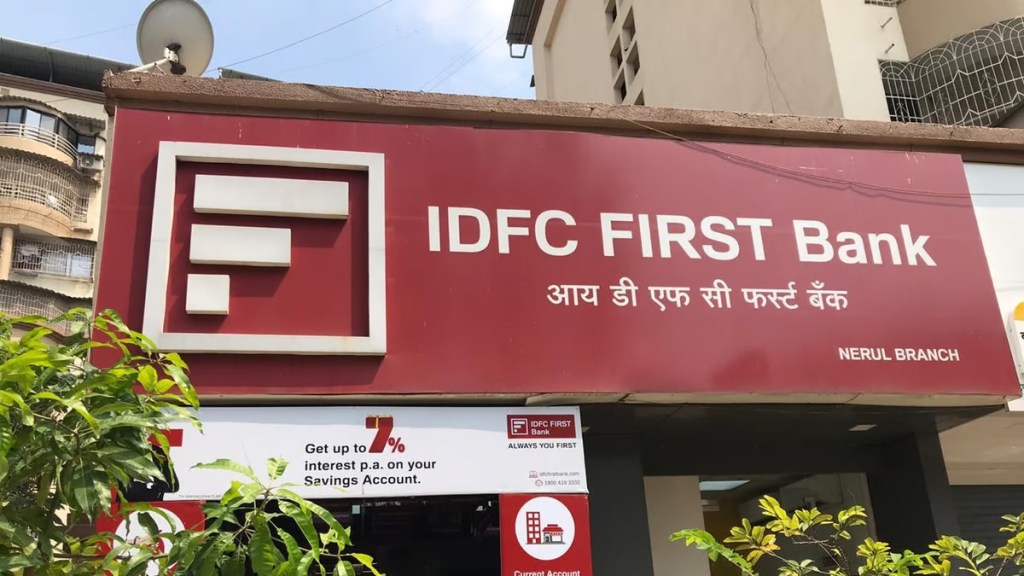Private sector lender IDFC First Bank will lower its credit-deposit ratio (CD) to below 100% in Q4FY24 and continue to moderate it further in FY25, down from 101.4% in Q3FY23, according to MD & CEO V. Vaidyanathan. His views are significant because the Reserve Bank of India (RBI) has reportedly asked lenders to raise their CD ratio to an “ideal” level of 70%-80%.
Speaking to FE, Vaidyanathan said: “We maintain a liquidity coverage ratio of 121% and are also funded by legacy bonds and other borrowings to the tune of Rs 30,000 crore, so our strategy is as and when these bonds mature, we will mature them with deposits. So this (CD ratio) will get automatically addressed. It should also be noted that at the time of the merger, our CD ratio was 136%, we have brought it down to 101.4% and by March we will come below 100% and it will keep coming down in FY25.”
IDFC First Bank’s deposits rose 43% year on year to Rs 1.76 trillion as of December end. This was despite the banking sector’s average deposits growing in the low single digits. Vaidyanathan said that the bank was able to record stronger deposit growth despite decreasing interest rates on savings accounts to only 3% from 4% earlier for balances of up to Rs 100,000.
“We have built an image of a good institution which gathers trust, built strong digital capabilities and customer-friendly product propositions. Therefore, the deposit is our strength and if the deposit strategy is right, then everything can be built on it in a bank,” he said, adding the bank’s incremental CD ratio for 9MFY24 was at 80%. The bank will watch the market and decide on the future trajectory of deposit rates.
While the low-cost current account and savings account ratio (CASA) will sustain at around Q3FY24 level of 46.8% going ahead, the overall deposit growth will continue being higher than credit growth, he added. The bank has been growing deposits at over 40% because it is also paying legacy borrowing costs. After the completion of legacy borrowing payments, the need for deposit mobilisation will also reduce, and the bank can reduce rates further.
Q3FY24 results
IDFC First Bank on Saturday reported an 18% year-on-year (YoY) rise in its net profit for the quarter ended December at Rs 716 crore. On a sequential basis, however, the profit after tax was lower nearly 5%. Vaidyanathan said the bank saw certain increased expenses related to festival season and a few technology initiatives during Q3 and total expenses were about Rs 70 crore-Rs 80 crore more than expected, which primarily led to the sequential contraction in the profit.
“We are building the bank model for the long-term, so one or two quarters can be a tad up or down but overall things on profitability look good for FY25,” Vaidyanathan added.
Further, he said that the bank has given a guidance till FY29 saying advances will grow 20% over the next five years, while deposits will grow at 24%. “On both fronts, we are doing better already,” he said. Further, the lender’s 1.45% gross non-performing asset ratio (GNPA) in retail, rural and small and medium enterprises (SME) loans as of Q3FY24 is already lower than the overall GNPA guidance of 1.5% in the next five years.
“Therefore, if we stay on course and play no cross-bat shots, the profit will automatically come. This is a reasonably straightforward guidance,” he said.
With the RBI’s hike in risk weights on unsecured credit, the private bank has slightly increased loan rates on concerned segments and tightened credit norms.
“As of now, there is no stress (in unsecured credit) at all. In fact, it is behaving quite well. Whether there will be a moderation of growth in this segment, we heed the regulator on this front, and will take the caution positively…we do expect the overall system to slightly slow down this segment’s growth…,” he said.
Higher risk weights have also led to a 100 basis points (bps) impact on the bank’s capital adequacy ratio. However, the capital position remains strong at 16.73% as of December 31, and accordingly, the bank does not foresee the need to raise capital as of now, he said.
